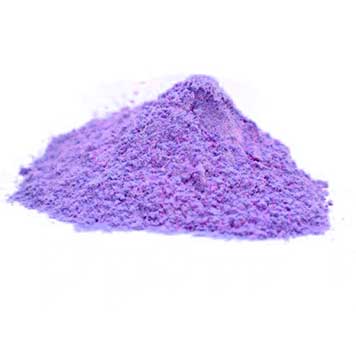
Commonly Used Food Preservatives and Their Effects on Food Safety
Common Food Preservatives Ensuring Safety and Freshness
Food preservation is an essential practice in the culinary world, allowing us to extend the shelf life of foods while maintaining their safety and quality. As we navigate through grocery aisles, it's not uncommon to come across food products that contain various preservatives. These additives play a crucial role in preventing spoilage and ensuring that food remains safe for consumption. In this article, we will explore common food preservatives, their functions, and the ongoing discussions surrounding their use.
What Are Food Preservatives?
Food preservatives are substances added to food products to prevent decay, spoilage, and bacterial growth. They help maintain the quality, flavor, and nutritional value of food, allowing us to enjoy products long after their production date. Preservatives can be classified into several categories, including antioxidants, antimicrobials, and chelating agents, each serving a specific function in food safety.
Common Types of Food Preservatives
1. Antimicrobials Antimicrobial agents are perhaps the most widely recognized preservatives. They work by inhibiting the growth of bacteria, yeasts, and molds. Some common antimicrobial preservatives include - Sodium Benzoate Often found in acidic foods like sodas and pickles, sodium benzoate helps prevent the growth of harmful microorganisms. - Potassium Sorbate Commonly used in dairy products, baked goods, and beverages, potassium sorbate can inhibit yeast and mold growth.
2. Antioxidants These preservatives prevent the oxidation of fats and oils, which can lead to rancidity and the development of off-flavors. Common antioxidants include - BHT (Butylated Hydroxytoluene) Frequently used in snack foods and cereals, BHT helps maintain flavor and freshness by preventing fat oxidation. - Vitamin E (Tocopherol) A natural antioxidant, Vitamin E is often added to oils and nuts to prolong shelf life without altering flavor.
common food preservatives

3. Chelating Agents Chelating agents bind to metal ions that can catalyze spoilage reactions, helping to stabilize the food product. A well-known chelating agent is - EDTA (Ethylenediaminetetraacetic acid) This compound is often used in canned foods and sauces to enhance stability by preventing metal-related spoilage.
The Debate Surrounding Food Preservatives
While food preservatives have been essential in promoting food safety and extending shelf life, their use has sparked ongoing debates. Concerns about the potential health effects of certain preservatives have led to calls for closer scrutiny. For instance, some studies have suggested that artificial preservatives might contribute to hyperactivity in children or have other adverse health effects. As a result, many consumers are now looking for clean label products, which emphasize minimal processing and the absence of artificial additives.
In response to consumer demand, the food industry has seen a rise in the use of natural preservatives. Ingredients like salt, sugar, vinegar, and certain spices can effectively preserve food without relying on synthetic chemicals. Additionally, the trend towards organic and non-GMO products has prompted manufacturers to seek out alternatives that align with consumer preferences.
Conclusion
Food preservatives are a pillar of modern food safety and quality assurance. They play an indispensable role in preventing spoilage, ensuring food safety, and allowing consumers to enjoy products long after their production date. While their use does raise important health considerations, the food industry continues to evolve, with a growing emphasis on natural preservatives and consumer transparency. As we become more aware of what we eat, understanding food preservatives empowers us to make informed choices about the foods we consume. By striking the right balance between preservation and health, we can enjoy the benefits of modern food technology while prioritizing our well-being.
-
Sodium Dichloroisocyanurate Safety Handling ProtocolsNewsJul.29,2025
-
Mining Chemicals for Copper Extraction Processes GuideNewsJul.29,2025
-
Fertilizer for Sale Shipping and Storage TipsNewsJul.29,2025
-
Dimethyl Disulfide as Sulfurizing AgentNewsJul.29,2025
-
Benzotriazole Safety Data Handling and Storage GuidelinesNewsJul.29,2025
-
Ammonium Bicarbonate Safety Handling Storage GuidelinesNewsJul.29,2025
-
The Transformative Role Of Trichloroisocyanuric Acid in Water TreatmentNewsJul.23,2025
Hebei Tenger Chemical Technology Co., Ltd. focuses on the chemical industry and is committed to the export service of chemical raw materials.
-

view more DiethanolisopropanolamineIn the ever-growing field of chemical solutions, diethanolisopropanolamine (DEIPA) stands out as a versatile and important compound. Due to its unique chemical structure and properties, DEIPA is of interest to various industries including construction, personal care, and agriculture. -

view more TriisopropanolamineTriisopropanolamine (TIPA) alkanol amine substance, is a kind of alcohol amine compound with amino and alcohol hydroxyl, and because of its molecules contains both amino and hydroxyl. -

view more Tetramethyl Thiuram DisulfideTetramethyl thiuram disulfide, also known as TMTD, is a white to light-yellow powder with a distinct sulfur-like odor. It is soluble in organic solvents such as benzene, acetone, and ethyl acetate, making it highly versatile for use in different formulations. TMTD is known for its excellent vulcanization acceleration properties, which makes it a key ingredient in the production of rubber products. Additionally, it acts as an effective fungicide and bactericide, making it valuable in agricultural applications. Its high purity and stability ensure consistent performance, making it a preferred choice for manufacturers across various industries.











